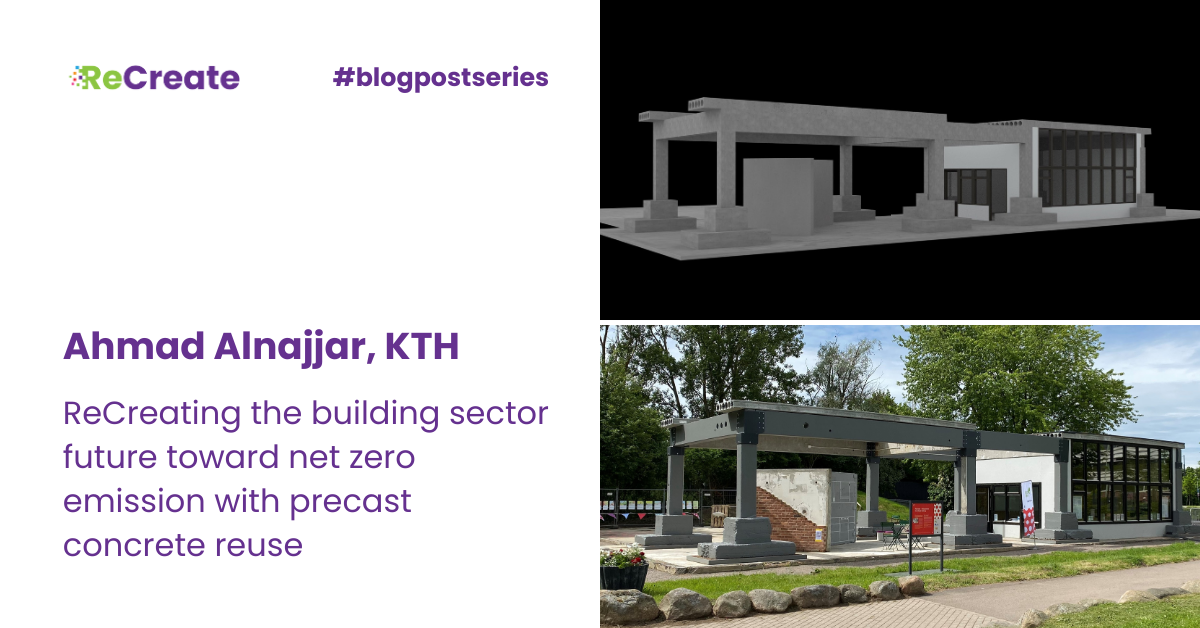
Ahmad Alnajjar, PhD student at KTH
ReCreate project is a forward-thinking initiative that explores the reuse of precast concrete elements from various angles. A key aspect of this project is evaluating the climate benefits from a life cycle perspective. Our recent work, particularly in the Swedish pilot construction, has shown promising results in reducing embodied carbon – a crucial step in sustainable and circular building practices. About 92% of embodied carbon was avoided at the building level which is largely attributed to the reuse of concrete elements, including precast concrete elements. This achievement aligns with previous research highlighting the benefits of reusing precast concrete and further emphasizes the reuse’s effectiveness in mitigating the environmental impact of construction. Unlike most previous studies, the embodied carbon evaluation of the Swedish ReCreate pilot project stands closer to real-world applicability. It is based on field experiments conducted by seasoned professionals in the building sector, adding practical validity and depth to our findings.
An important facet of our findings in the ReCreate project underscores a significant advantage in the reuse of whole precast concrete elements over traditional recycling methods. Through our comprehensive analysis, it has become evident that the embodied carbon savings achieved by reusing entire elements are considerably greater than those realized by merely crushing to recycled concrete aggregate and shredding the rebar to steel scrap. This distinction is crucial, as it highlights the substantial environmental benefits of reusing structures in their complete form. By opting for reuse over recycling, we not only retain the material’s inherent value but also significantly reduce the carbon footprint associated with the production of new building materials.
Our assessment has also brought to light interesting insights. Contrary to common concerns, we found for example that the transportation of reused elements does not significantly add to the project’s carbon footprint, as it is comparable to the transport distances of new building materials. We hope that this finding will encourage building industry actors to reconsider their material sourcing strategies, recognizing that incorporating reused elements can be both environmentally beneficial and logistically viable.
Currently, our team is focused on comprehensively understanding the future availability and demand for pre-used precast concrete elements. We are assessing both the timing of their availability and the quantities that can be effectively reused in new construction projects. By addressing these critical aspects, we aim to elucidate the role that reusing precast concrete elements can play in meeting Sweden’s and the EU’s ambitious climate goals.
Through the ReCreate project, we are exploring new avenues in construction, aiming to make a meaningful contribution to sustainable building practices. Our team is dedicated to not only implementing these innovative practices but also to rigorously documenting and analyzing our findings. Our research will soon be available in various scientific journals, providing a detailed and scholarly overview of our work and its implications for sustainable construction. Keep an eye on our progress as we delve further to uncover the potential and challenges of this innovative approach and look out for our publications to gain a deeper understanding of the impact and scope of our project.

